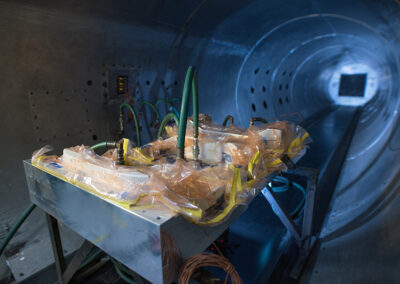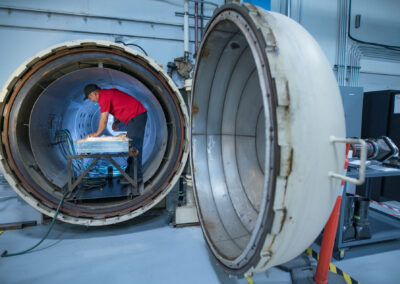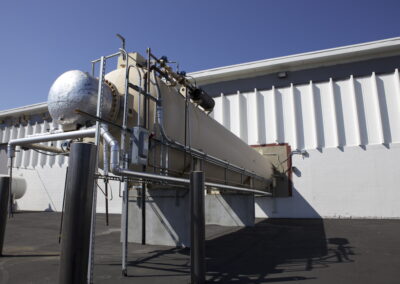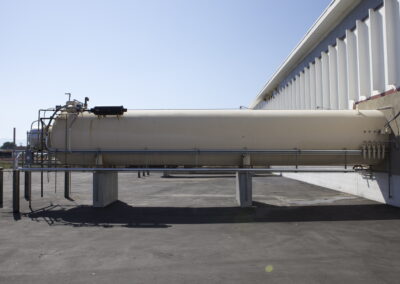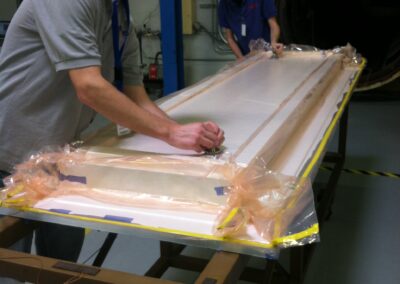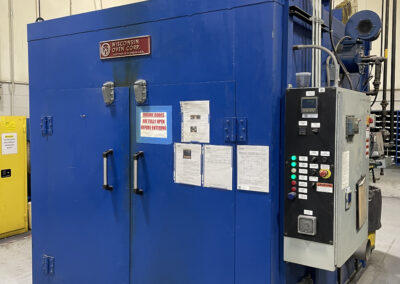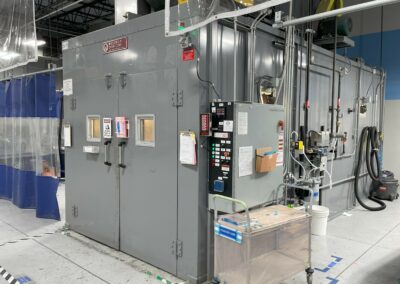Autoclave and Oven Cure
The primary purpose of the heated cure cycle is to allow the resin to crosslink to achieve full structural properties. Ovens and autoclaves are important pieces of equipment during this process, but the selection depends on the objectives and performance of the structure. While both apply heat, the autoclave has the added feature of increasing the ambient pressure of the air in the chamber, which provides additional compaction and consolidation of the laminate. This process yields a higher quality part, though may increase the overall cost and cycle time relative to a standard oven cure. The autoclave is typically used to fabricate high-performance, high-precision, or critical structures, while the oven is adequate for standard parts. Temperature, ramp rate, hold times, and vacuum and process pressures must be carefully selected and controlled during the cure cycle, taking into account thermal gradients in the part, resin flow, and primary and secondary chemical reactions of the resin to obtain the optimum performance of the structure.
Key Benefits of Autoclave and Oven Cure
- Capacity: Depending on part size, multiple components may be cured during the same cure cycle in each piece of equipment, increasing throughput and efficiency.
- Precision: The temperature of the tool and part can be monitored and controlled by the automatic adjustments of the control system to ensure processing objectives are met.
- Automation: After the operator initiates the cure cycle, all processing is carried out by the controller and does not require human input.
Nammo Composite Solutions employs a variety of oven sizes to cure a broad range of part types. Depending on the product requirements, parts may be cured in horizontal or vertical positions, or constantly rotated during the cure cycle with a rotisserie to improve dimensional uniformity. The maximum oven temperature capability of the company’s equipment is 650 degrees Fahrenheit.
For products requiring additional consolidation during cure, Nammo Composite Solutions uses an autoclave measuring 5 feet in diameter and 35 feet in length. This equipment handles temperatures up to 400 degrees Fahrenheit, with an internal pressure of 100 psi. On-site nitrogen generation is employed to support the process. The equipment uses a programmable controller to regulate the cure cycle, with corresponding sensor data (temperature, vacuum pressure, autoclave pressure) recorded.

